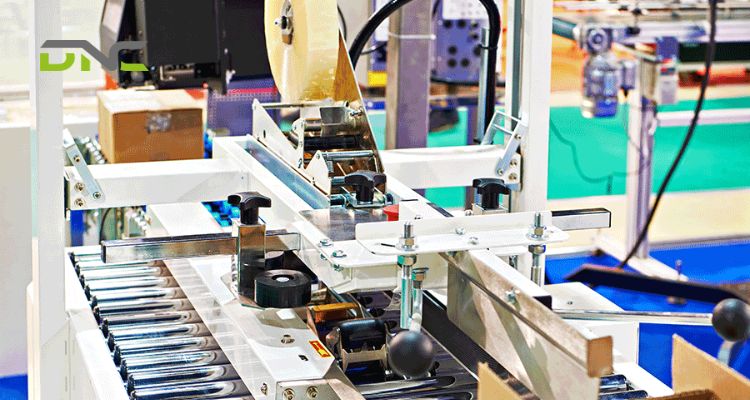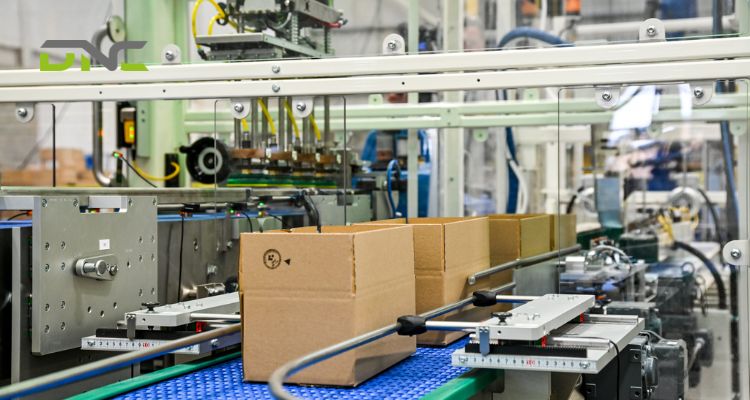Packaging Automation Guide for Manufacturers
As Malaysia accelerates its journey toward Industry 4.0, packaging automation is becoming a critical driver for industrial modernization. From food processing plants to logistics centers, automated packaging systems are helping local manufacturers achieve higher efficiency, product quality, and sustainability — while reducing operational costs and dependency on manual labor.
This guide explains what packaging automation is, how it works, and why it’s essential for Malaysian industries looking to stay competitive in the global market.
What Is Packaging Automation?
Packaging automation is the process of using machines, robots, and control software to carry out packaging tasks automatically such as forming, filling, sealing, labeling, and palletizing.
These systems integrate technologies like PLC controllers, smart sensors, and conveyors to ensure accuracy and speed. They’re commonly used in food, beverage, pharmaceutical, and consumer goods manufacturing.

What Is Packaging Automation?
What Are the Benefits of Implementing Packaging Automation
Packaging automation offers measurable advantages for manufacturers aiming to improve efficiency, quality, and profitability.
Below are the main benefits explained in detail:
- Improved Efficiency and Throughput: Automated packaging systems work continuously with minimal downtime. This allows factories to produce more in less time, standardize operations, and reduce variability. With faster changeovers and optimized cycle times, manufacturers can achieve higher output per shift and better use of equipment capacity.
- Cost Reduction and Faster ROI: While automation requires an initial investment, the long-term savings are significant. By cutting labor costs, material waste, and production errors, most factories see a payback within one to three years. For Malaysian industries facing manpower shortages and increasing wages, automation delivers sustainable profitability.
- Enhanced Product Quality and Safety: Automated systems ensure consistent sealing, labeling, and packaging integrity. This reduces human error and guarantees compliance with ISO 9001, GMP, and HACCP standards. For food, beverage, and pharmaceutical products, automation also strengthens traceability and contamination control.
- Better Workplace Safety: Automation minimizes manual lifting and repetitive movements, reducing injury risks. Robots and cobots handle heavy loads and repetitive tasks, allowing human operators to focus on higher-value roles like supervision and quality monitoring.

What Are the Benefits of Implementing Packaging Automation?
Key Components of an Automated Packaging System
A modern automated packaging system consists of multiple integrated components that work together for a seamless production flow.
Below are the core elements that make up a full packaging automation line:
- Primary and Secondary Packaging Machines involve equipment like form-fill-seal machines, liquid fillers, and pouch sealers that handle direct product containment. Secondary packaging systems such as carton erectors, case packers, and sealing machines, group and prepare products for shipping. The combination of both ensures efficiency from product preparation to dispatch.
- End-of-line (EOL) automation manages final packaging steps, including robotic palletizing, stretch wrapping, and vision inspection. Cobots can flexibly palletize products on compact floorspace while ensuring uniform stacking. Vision systems verify labels and barcodes to guarantee shipment accuracy.
- Control and Integration Technologies: PLCs, HMIs, and SCADA systems form the backbone of modern packaging control. They coordinate all devices and allow operators to visualize and monitor system performance in real time. Integration with IIoT platforms enables predictive maintenance, performance dashboards, and energy efficiency tracking.
- Smart Conveying and Material Handling: Conveyors, sorters, and transfer systems ensure smooth product movement between stages. Advanced systems use sensors and
Latest Packaging Automation Technologies and Trends
Technology is the driving force behind today’s smarter, faster, and more flexible packaging systems. Below are the top innovations shaping the future of packaging automation in Malaysia.
Robotics and Collaborative Robots (Cobots)
Collaborative robots are redefining automation with flexibility and safety. They can work alongside humans, require less floor space, and are easy to program. Cobots from brands like Universal Robots, ABB, and DNC Automation Malaysia are ideal for palletizing, case packing, and box handling in high-mix, low-volume environments.
Smart Sensors and Vision Systems
Machine vision powered by AI and deep learning ensures perfect packaging quality. Sensors from Keyence, Cognex, and Omron perform tasks such as defect detection, barcode scanning, and label verification. These systems reduce rejection rates and enable real-time quality control.
Data-Driven Packaging with IIoT Connectivity
Through Industrial Internet of Things (IIoT), packaging lines now collect and analyze performance data continuously. This enables:
- Predictive maintenance and early fault detection
- Cloud-based monitoring dashboards
- Data-driven decision-making for process optimization
- IIoT-driven packaging helps manufacturers transition toward smart factory operations aligned with Malaysia’s Industry 4.0 goals.
AI and Machine Learning Integration
Artificial Intelligence helps identify performance trends, predict equipment issues, and optimize cycle speeds autonomously. Machine learning continuously improves packaging efficiency through data feedback loops.

image1
How to Implement a Packaging Automation System
Implementing packaging automation requires a strategic, step-by-step approach to ensure smooth integration and long-term success.
Here’s how Malaysian manufacturers can plan and execute automation effectively:
Assess Your Current Packaging Process
Start with a comprehensive process audit to identify inefficiencies, bottlenecks, and repetitive tasks suitable for automation. Measure OEE (Overall Equipment Effectiveness) to determine productivity losses and potential ROI. This helps justify investment and define clear automation goals.
Design the Right Automation Strategy
Based on audit results, plan which packaging stages to automate first — from filling to palletizing. Consider production volume, product variety, and floor space constraints. Simulation tools can help visualize system layouts and performance before implementation.
Select a Reliable Automation Partner
Choose a partner with proven expertise in system integration, robotics, and after-sales support. Looking for local experience in packaging applications and ensuring access to maintenance and spare parts locally. DNC Automation is a trusted integrator offering turnkey packaging automation services, from design and simulation to installation and support.
Installation, Commissioning, and Staff Training
Proper installation ensures system reliability and performance consistency. After commissioning, train operators and maintenance teams to handle routine operation, troubleshooting, and data analysis. Well-trained personnel are key to achieving maximum uptime and ROI.
Continuous Optimization and Data Monitoring
Once operational, use IIoT data analytics to monitor efficiency and detect deviations. Continuous improvement through data feedback ensures the system remains optimized as production needs evolve.

How to Implement a Packaging Automation System
Conclusion
Packaging automation is transforming Malaysia’s manufacturing industry, driving it toward smarter, faster, and more sustainable production.
By integrating robotics, vision systems, and IoT connectivity, companies can reduce costs, improve safety, and enhance product consistency. With the right strategy and a trusted partner like DNC Automation, Malaysian manufacturers can lead confidently in the Industry 4.0 era.
- 2 views
- 0 Comment




Recent Comments